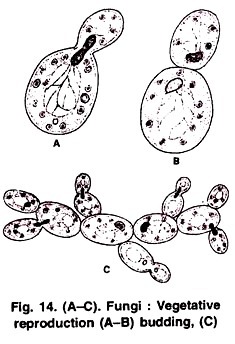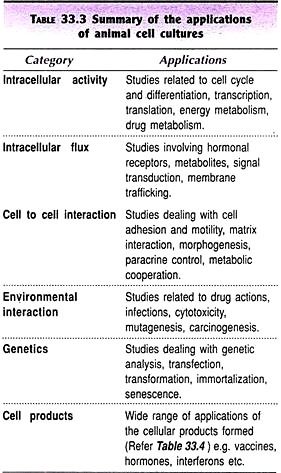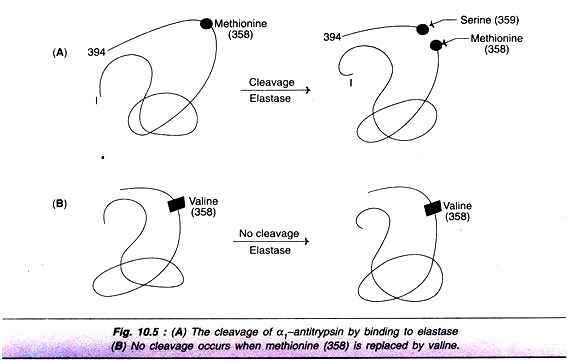Food Chain:
This is defined as a series of organisms through which the food energy is transferred.
In other words, the transfer of food from the plants through herbivores to carnivores is referred to as the food chain.
Each organism in the series feeds and derives energy from the preceding one, as shown in the following simple linear food chain on land.
A freshwater ecosystem has different food chains than the one described above.
A simple linear food chain in freshwater may be shown as follows:
In a freshwater ecosystem floating microscopic phytoplankton are examples of the producer class, which provide food for the primary consumers or zooplankton. The latter consist of microscopic animals and larval forms, which in turn provide food for the secondary consumers such as fish. The tertiary consumers feed on fish and they may be predatory fish, or birds, or mammals.
Food chains may be simple or complex. A simplest food chain involves essentially two links consisting of photosynthetic plants and microbes that obtain their nutrients from these plants by degrading or decaying them after their death.
Complex food chains consist of many links. For example, in the ocean, the microscopic plants of the photic zone are primarily responsible for the production of organic matter by photosynthesis. The plants and their products may be consumed r. certain unicellular or multicellular herbivorous zooplankton.
These are then ingested by other multicellular carnivorous zooplankton, which in turn may be eaten by certain worms and crustaceans. The smaller crustaceans may be devoured by small fish, which are eaten by larger fish. The latter in turn may serve as food for various birds and mammals whose eventual death and subsequent composition by microbes of decay terminates the food chain.
According to Odum, food chains are of two basic types: grazing food chain and detritus food chain. A grazing food chain starts from a green plant base and goes through grazing herbivores to carnivores. A detritus food chain starts from dead organic matter and goes through detritus – feeders to carnivores.
Food Web:
Food chains are not always simple and isolated but are interconnected with one another. The interlocking pattern of food chains or a matrix of food chains, with all sorts of short circuits and connections is often called the food web or food net. However, in any food web all the species not equally important and many could be removed without seriously affecting the more important species.
Thus, food web is a simplified representation of the complex interrelationships of the population of plants and animals which exist in a community (Fig. 4.2a). The basic operational principle in a food web is that each species is dependent upon at least one other species, and the numbers of each link species must be sufficient for their continued existence. If these conditions are maintained, the web will exist in an ecological nutritional equilibrium.
However, food webs are affected by changes in the environment, which may affect the food supply and reproductive rate. A food web on land is shown in (Fig. A2b). In an aquatic ecosystem a more complex food web will exist, as shown in (Fig. 4.3). This is also affected by changes in the environment, such as variations in water temperature and oxygen content as well as nutrient supply, which can reduce or increase the population of link species.
 Energy Flow in Food Chains:
Energy Flow in Food Chains:
The transfer of the various forms of energy in a food chain is governed by the following laws of thermodynamics. The first law of thermodynamics, also known as the law of conservation of energy, states that energy may be transformed from one form (type) to another, but is never neither neither created nor destroyed. Thus radiant energy in the form of light falling on a green plant is transformed partly into chemical energy or potential energy of food. This part of the transformation is initiated by the metabolic process called photosynthesis.
The second law of thermodynamics states that non-random energy (mechanical, chemical, radiant) cannot be converted into random form (heat energy) without some degradation. Because some energy is always dispersed into unavailable heat energy, no spontaneous transformation (for example light to food) can be 100% efficient.
Therefore, when the chemical energy accumulated K the plants is converted into kinetic energy by herbivores when they consume the plants, some degradation of energy occurs through its conversion into heat. Similarly, further energy conversion and degradation will occur when the herbivore is consumed by a primary carnivore, and when the primary carnivore in turn is eaten up by a secondary carnivore.
The organisation of food chain and the working of the two laws of thermodynamics can be understood by means of a simplified energy-flow diagram (Fig. 4.4). In this diagram the “boxes” 1, 2, 3 represent the trophic levels (1: producers or autotrophs, 2: primary consumers or herbivores, 3: secondary consumers or carnivores) and the “pipes” depict the energy flow m and out of each level. Energy inflows balance outflows are required by the first law of thermodynamics, and each energy transfer is accompanied by dispersion of energy into unavailable heat (i.e. respiration) as required by the second law.
Bottom line in the diagram shows the order of magnitude of energy losses expected at major transfer points, starting with a solar input of 3000 kcl per square metre per day. (Fig.4.4) Thus, it is clear that energy flow is greatly reduced at each successive level regardless of whether we consider the total flow (1 and A) or the components P and R.
The diagram also shows the double metabolism of producers (i.e., gross and net production) and the approximately 50 per cent absorption by the plant cover and one per cent conversion of light at the first trophic level. Secondary productivity (P2, P3, in the diagram), tends to be about 10 per cent at successive consumer trophic levels, although efficiency may be higher (say 20 per cent), at the carnivore levels as shown in the diagram.
The energy flow diagram may, in principle, be applied to any ecosystem or community. As the initial amount of energy introduced into a food chain in a given habitat is limited by the duration and intensity of sunlight, there will be some point along the food chain of the habitat when this initial load of radiant energy has been transformed and finally all converted to heat energy. At this point the food chain will have reached the steady state, in which the amount of energy taken into its biological system in limit time as radiant energy exactly balances that returned as heat energy to the habitat.




